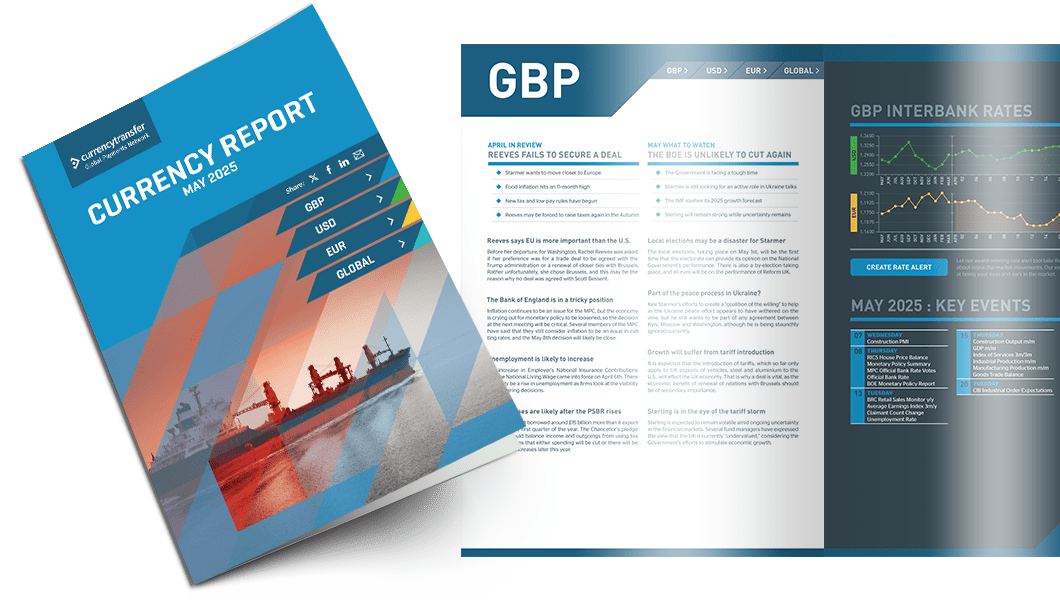
Highlights
- Inflation may stall as Russia pulls out of its grain deal
- Manufacturing output remains in contraction
- Eurozone unemployment continues to fall
Interest rate hike certain – Magnitude in doubt
This was the largest fall since 2009, the height of the financial crisis. The fall coincides with mortgage rates rising to their highest level in fifteen years. Currently, a two-year fixed-rate home loan costs, on average, 6.85%.
The average price of a house has fallen by 13k since the peak that was reached last August. Currently, a first-time buyer who has a deposit of 20% will see that mortgage payments account for 43% of their salary. This is an increase of 10% over this time last year.
The rate of inflation fell to 7.9% last month, and a survey of food production showed that food price inflation has peaked in the past couple of months as the cost of grains and vegetable oils fell significantly.
However, food price inflation may be hit by Russia’s decision to pull out of the treaty it had agreed to allow the safe passage of grain carriers using Black Sea ports.
In recent days, Russia has increased its assault on Odesa, Ukraine’s largest port in that region.
Last week, everyone breathed a huge sigh of relief as the IMF raised its prediction for UK growth this year from -0.3% to +0.4%. The economic data since then has not backed up that forecast as house prices and industrial output decline.
In July, factory output showed a minor improvement from 45 to 45.3, but it is still significantly below the line, which separates contraction from expansion.
A further rise in interest rates at tomorrow’s MPC meeting is certain, but it is unclear whether the rise will be fifty basis points as was seen last month or twenty-five, which has become the norm over the past nineteen months.
A rate increase at a time when the economy is struggling to make any headway goes against every economic theory, but the reality is that with inflation remaining well above the Government’s 2% target, the Central Bank is left with little option.
The pound fell further yesterday as speculation grew about when economic developments would soon force the Bank of England to stop the cycle of rate increases.
It fell to a low of 1.2741 and closed at 1.2776.

Read our latest currency report
Most impactful events planned this month and how they could impact your business
Things are beginning to fall in place for the Federal Reserve
Buoyed by the surprising rise in second-quarter GDP, the Fed could easily justify driving home its advantage at its next meeting, but the comments of Jerome Powell at the meeting last week have encouraged a feeling that only one further hike will take place at the three remaining meetings this year.
The first of this week’s employment reports was released yesterday, and it showed that there was a decrease in job openings in July from 9.61 million to 9.58 million previously.
This fall is in line with a cooling of the employment market and the expectation that the economy will have created less than 200k new jobs last month.
One of the most telling pieces of data for Jerome Powell is core services inflation, excluding housing. Powell considers this rather obscure data to indicate the true state of the economy. For this reason, analysts and commentators have begun to follow this to try to figure out when the FOMC will reverse course and begin to cut rates.
The most common belief is that there will be no cut in rates until headline inflation has fallen to, or even breach the 2% target. However, core services inflation has fallen substantially over several months and may have already bottomed out. This has led to the theory that the Fed may cut rates before inflation is at target.
The employment data has now reached a point where observers are looking at trends within cyclical industries. Those that often follow but also lead trends in the economy. When job creation in those industries falls significantly or becomes negative, that is the time when a rate cut appears on the horizon.
There has been no downside surprise from the NFP during the entire cycle of rate hikes, and no one is seeing anything other than a moderate fall in July’s data that is due for release on Friday.
The dollar index is beginning to gain support from relative growth rates between the U.S. and the rest of the G7. It rose to a high of 101.90 yesterday and closed at 101.88.
Lagarde sees data from Spain and Germany as “encouraging”
The reason for this is that the ECB is on record as wanting the Eurozone to be treated as one entity, similar to the U.S.
This is unlikely to happen until there is much closer harmony between taxation and fiscal policy between nations.
Very few Eurozone members will find themselves in a position to agree to a fiscal union as that would allow Brussels, or more importantly, Frankfurt, to determine levels of social aid.
For now, certain nations will have a far greater effect on the actions of the Central Bank than others. Germany is often considered a “proxy” for Eurozone activity, even though it was “far and away” the best performing of the twenty states which make up the Eurozone.
More recently, Germany’s economy has had something of a “fall from grace” and is currently the worst performing in the region.
There remains confidence that the only real issue with the German economy is the effect that a high rate of inflation has had on output and growth. That is a theory that all German politicians and economics subscribe to and is the most significant reason the ECN will continue to hike rates into the Autumn.
There are a number of anomalies that point to pressure points within the region. Yesterday’s release of employment data shows that unemployment fell to an all-time low last month, an incongruous statistic when the region’s largest economy is suffering a recession.
The same is true of Q2 GDP, which saw a positive return despite factory output falling at its fastest pace since the onset of the Pandemic. While fiscal union remains a “pipe dream,” any truly unambiguous consideration of the Eurozone economy is almost impossible.
The euro remains under pressure now that it has breached the 1.10 level against the dollar. Yesterday, it fell to a low of 1.0952 and closed at 1.0984. Liquidity will begin to dry up now, which could easily magnify any moves, particularly when they are close to significant support or resistance points.
Have a great day!

Exchange rate movements:
01 Aug - 02 Aug 2023
Click on a currency pair to set up a rate alert
Alan Hill
Alan has been involved in the FX market for more than 25 years and brings a wealth of experience to his content. His knowledge has been gained while trading through some of the most volatile periods of recent history. His commentary relies on an understanding of past events and how they will affect future market performance.